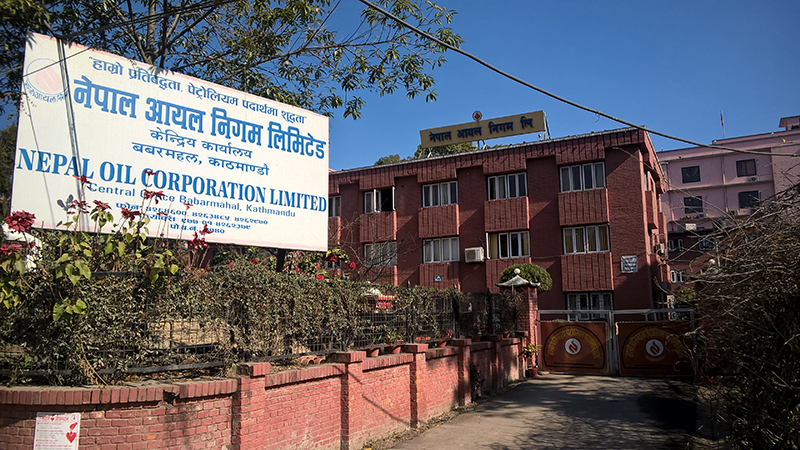NOC estimates Rs 117 bn needed to boost fuel storage capacity for three months
Kathmandu, January 10
Nepal Oil Corporation (NOC) has said that it requires a fund of Rs 117 billion to increase the petroleum storage capacity in the country to cater to the demand of at least three months as planned by the government.
NOC has made the budget forecast for increasing petroleum storage capacity on the basis of the budget required to acquire land, develop necessary infrastructure and the price of petroleum products that will remain in reserve for three months.
NOC has estimated that it would require Rs 10 billion for land acquisition, Rs 50 billion to develop its infrastructure, which includes construction of depots and other technical aspects, and Rs 57 billion to keep fuel in reserve for three months.
Currently, NOC has reserve capacity for 5,184 kilolitres (kl) of petrol, 42,400 kl of diesel, 15,500 kl of kerosene and 8,500 kl of aviation turbine fuel (ATF), while 7,000 metric tonnes of cooking gas is stored only by the private liquefied petroleum gas (LPG) bottlers. This fuel reserve is able to meet the domestic demand for a mere three to four days.
If fuel storage capacity is to be increased targeting three months’ consumption in Nepal, the current reserve capacity of petrol has to be expanded to 135,000 kl and diesel capacity to 405,000 kl, according to Sushil Bhattarai, deputy managing director of NOC. Similarly, reserve capacity of kerosene and ATF has to be upgraded to 5,100 kilolitres and 60,000 kilolitres, respectively. Likewise, current LPG reserve has to be expanded to 120,000 metric tonnes. NOC’s calculation of required fuel reserve is based on demand forecast of petroleum products for next five years.
NOC has predicted that average demand of petrol, diesel, ATF and LPG will grow by 10 per cent, five per cent, nine per cent and 12 per cent per annum on an average, respectively. However, it has projected a fall in kerosene demand by 13 per cent per annum on an average over the next five years.
Meanwhile, the government has vowed that it would financially assist NOC to increase its oil storage capacity across the country. “Increasing petroleum reserves is one of the major agenda of the government. As NOC will have to inject a huge amount of money for oil that will remain in stock for three months, financial support to NOC for this and other infrastructural developments is inevitable,” Deepak Bohora, minister for supplies said today at a function to mark the 47th anniversary of NOC.
Ram Janaki Petroleum Pipeline
KATHMANDU: Nepal Oil Corporation (NOC) has proposed to name the yet-to-be constructed Raxaul-Amlekhgunj Petroleum Pipeline as ‘Ram Janaki Petroleum Pipeline’ to reflect the historical ties between Nepal and India.
Both NOC and Indian Oil Corporation (IOC) are positive about changing the name of the cross-border oil pipeline, according to NOC officials. NOC is expected to soon forward this proposal to its board for approval.
38-km portion to remain in Nepal
KATHMANDU: Of the total 41-kilometre length of the Raxaul-Amlekhgunj Petroleum Pipeline, 38 kilometres will remain in Nepal side after Indian Oil Corporation (IOC) shifts all of its Raxaul-based oil depots to Motihari soon.
Due to this change, the construction of the cross-border oil pipeline will start from Motihari instead of Raxaul, which was planned earlier.
As per the earlier plan, the length of the pipeline that would lie in Nepali territory was said to be 39 kilometres. After completion of the project, the cross-border pipeline will be able to deliver 300 kilolitres of petrol, diesel and kerosene each per hour, according to Bhanubhakta Khanal, spokesperson for NOC.






